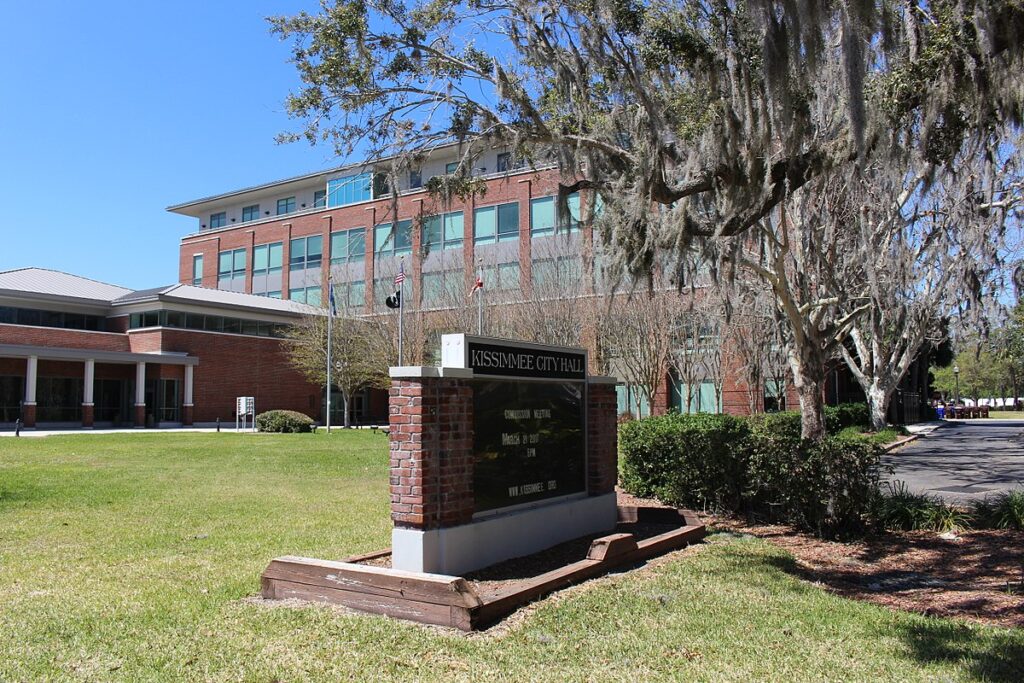
Moving to Kissimmee, Florida: A Comprehensive Relocation Guide
Considering moving to Kissimmee, Florida? This diverse Osceola County city offers affordable housing, theme park proximity, and growing communities. With approximately 80,000 residents in 2025, Kissimmee combines tourist economy with residential neighborhoods and Central Florida access.
Demographic Profile to Consider If Moving to Kissimmee:
Kissimmee’s 2025 population is approximately 80,000 residents in this Osceola County city south of Orlando. The median age is around 33 years, reflecting young families and working-age residents. The population is approximately 35% White, 60% Hispanic, creating a predominantly Latino community with strong Puerto Rican representation. Kissimmee features diverse neighborhoods from historic downtown along Broadway to suburban developments and tourist corridors near Walt Disney World. The city has transformed from cattle town to tourism-influenced community, maintaining Old Florida character while accommodating growth. The Hispanic majority influences culture, commerce, and community character. Kissimmee attracts diverse residents seeking affordable Central Florida living with theme park employment access. Find trusted local services for moving, living, and working in Kissimmee.Kissimmee Relocation Directory
Cost of Living to Consider If Moving to Kissimmee:
Kissimmee offers affordable housing for the Orlando metropolitan area. Median home values range from $300,000 to $380,000 in 2025, significantly lower than neighboring areas while providing theme park proximity. The median household income is approximately $52,000. Rental properties average $1,600 to $2,100 monthly. Florida’s absence of state income tax benefits residents. Overall cost of living is moderate, making Kissimmee attractive for first-time buyers, young families, and service workers. The city provides value for those working in Orlando’s tourism industry or seeking affordable Central Florida living. Housing costs vary from older neighborhoods to newer suburban developments. The tourism economy influences housing demand and rental markets.
Economy and Job Market:
Kissimmee’s economy revolves around tourism, hospitality, and theme park industries. Walt Disney World, Universal Orlando, and SeaWorld employ thousands from Kissimmee. Hotels, restaurants, and attractions along U.S. Highway 192 create vast hospitality employment. Osceola County government and schools provide public sector jobs. Healthcare facilities including Osceola Regional Medical Center offer medical employment. Retail centers serve both residents and tourists. Many residents work in service industries, hospitality, retail, and construction. The Osceola Heritage Park hosts events and conventions. Some residents commute to Orlando for professional services employment. The tourism-driven economy creates both opportunities and challenges with seasonal fluctuations and service-level wages. The diverse economy includes small businesses serving the Hispanic community.
Education:
Osceola County School District serves Kissimmee students with numerous schools including Osceola High School, Celebration High School, and various elementary and middle schools. The district operates throughout Osceola County with diverse student populations. Valencia College operates a campus in Kissimmee providing associate degrees and workforce training. The University of Central Florida is accessible in Orlando. The school district serves a rapidly growing, diverse population with English language learner programs and varied academic offerings. Educational quality varies significantly by school, with newer schools in developing areas often receiving higher ratings.
Recreation and Lifestyle:
Kissimmee’s proximity to Walt Disney World, Universal Orlando, SeaWorld, and other theme parks defines the area’s recreational opportunities. Residents enjoy annual pass benefits and easy access to world-class entertainment. Old Town entertainment complex offers shopping, dining, and attractions. Lakefront Park along Lake Tohopekaliga provides walking paths, playgrounds, and events. The lake offers fishing, boating, and airboat tours through Florida wetlands. Osceola Heritage Park hosts livestock shows, rodeos, and events. The downtown Kissimmee area features restaurants reflecting the community’s Hispanic culture. Nearby attractions include Gatorland and numerous dinner shows. The subtropical climate enables year-round theme park visits and outdoor activities. The lifestyle combines tourist amenities with residential community character. The diverse population creates multicultural dining and shopping experiences.
Healthcare and Services:
Kissimmee residents access healthcare through AdventHealth Kissimmee, Osceola Regional Medical Center, and numerous medical facilities throughout Osceola County. Additional providers in Orlando offer specialized care. The region’s healthcare infrastructure serves the growing population, with continued expansion matching development. Quality medical care is accessible throughout the area.
Transportation:
Kissimmee benefits from U.S. Highway 192 (Irlo Bronson Memorial Highway) as the primary tourist corridor, and U.S. Highway 17/92 running north-south. Interstate 4 and Florida’s Turnpike are accessible providing Orlando connectivity. Orlando International Airport is approximately 25-35 minutes north. LYNX operates bus routes throughout Kissimmee and the Orlando metro. Most residents rely on personal vehicles. Traffic congestion occurs along tourist corridors, especially during peak seasons. Typical commute times to Orlando range 30-45 minutes.
Conclusion:
Moving to Kissimmee in 2025 offers affordable Central Florida living with theme park proximity, diverse culture, and growing communities. The city’s combination of low housing costs, tourism employment access, and Hispanic heritage makes it ideal for young families, service workers, and those seeking value in the Orlando area with direct access to the world’s premier theme parks.

